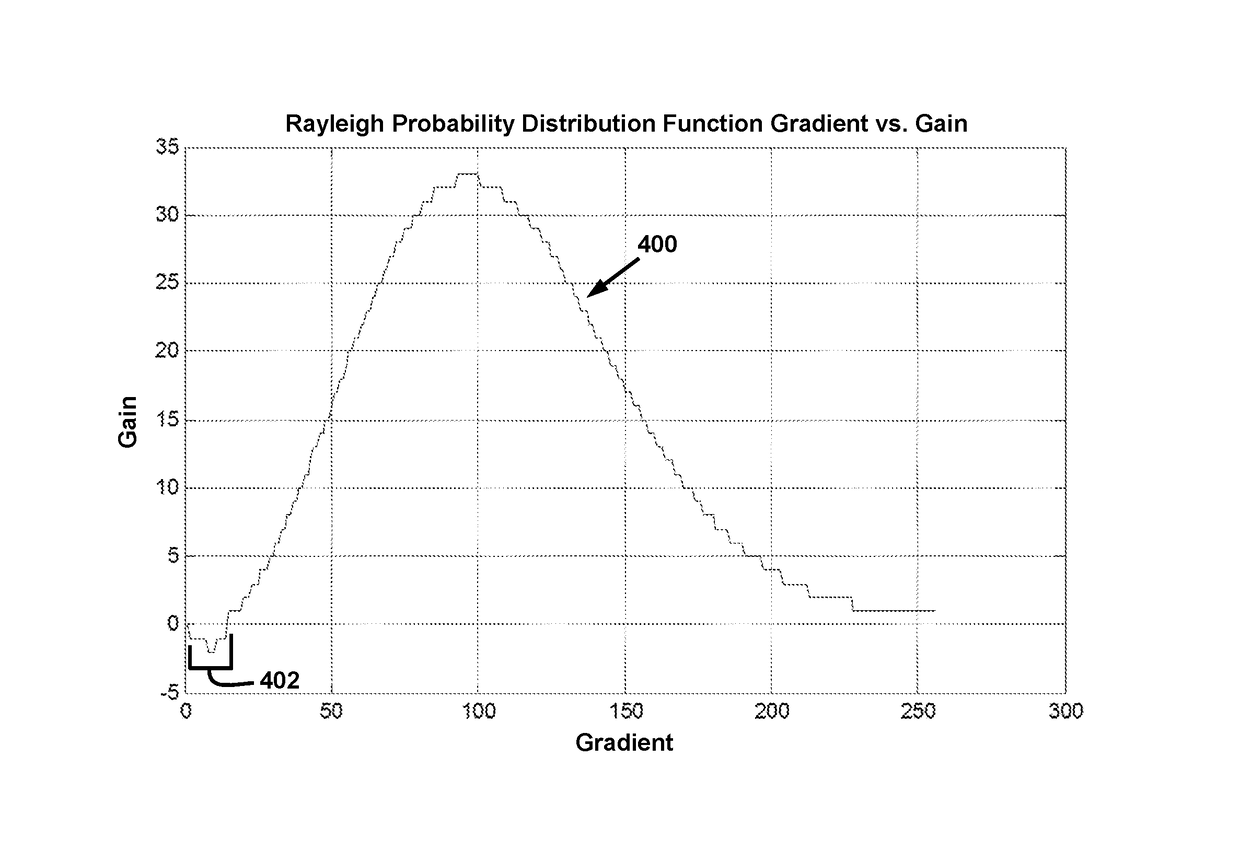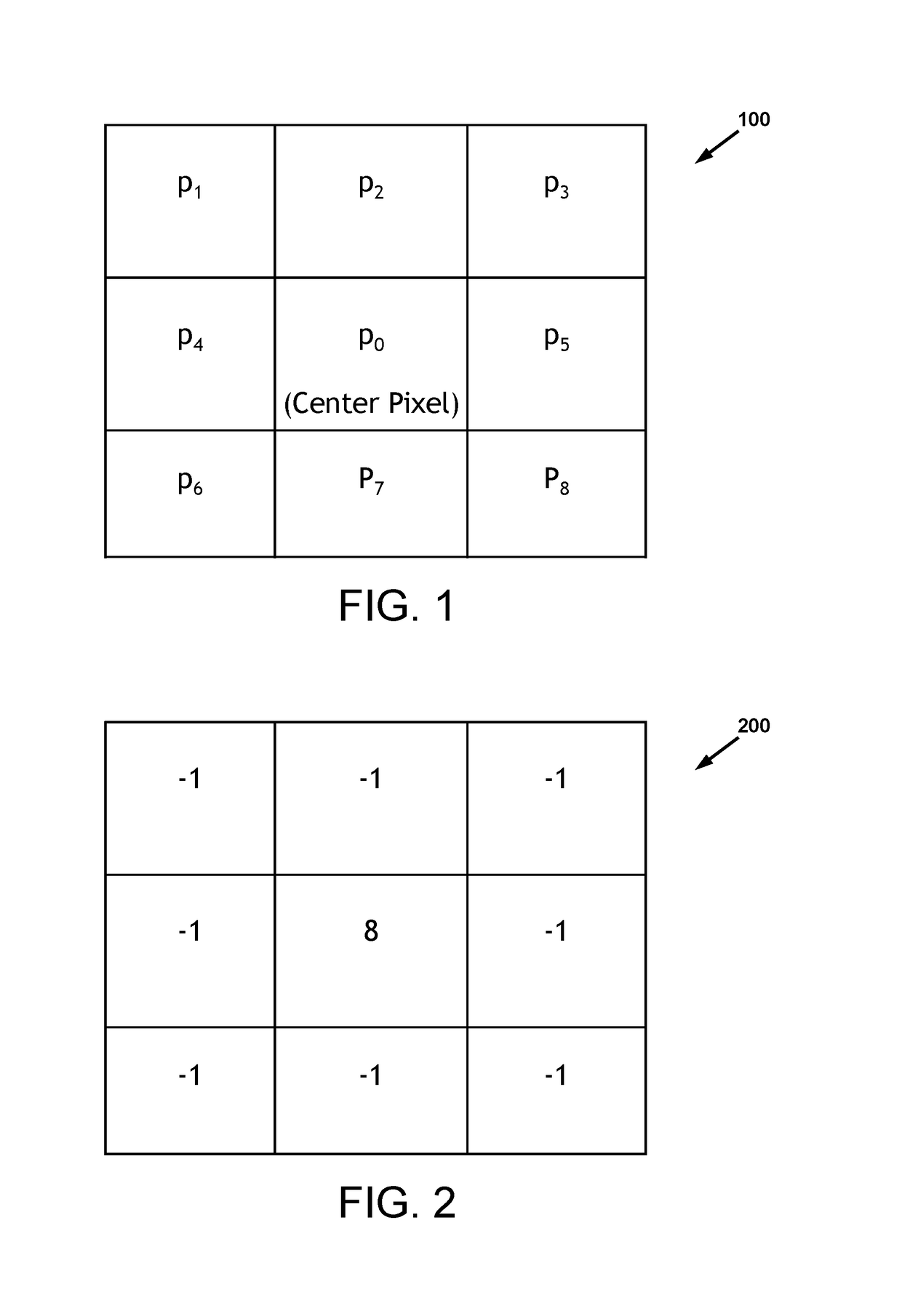Adaptive sharpening in image processing and display
a technology of image processing and image, applied in image enhancement, image analysis, instruments, etc., can solve the problems of unnatural edge transitions, unnatural to viewers, and negative perception of glows in output images by viewers, and achieves simple implementation, reduced noise, and eliminated artifacts
- Summary
- Abstract
- Description
- Claims
- Application Information
AI Technical Summary
Benefits of technology
Problems solved by technology
Method used
Image
Examples
Embodiment Construction
[0032]For a general understanding of the present invention, reference is made to the drawings. In the drawings, like reference numerals have been used throughout to designate identical elements. Additionally, as used herein, a “non-transitory computer readable medium” is meant to include all computer readable media, including but not limited to hard disks, compact disks, digital video disks, flash memory, random access memory, read-only memory, cache memory, and register memory; and to not include a transitory propagating signal
[0033]As noted above in the SUMMARY, an algorithm in accordance with the present disclosure is a generalization of an unsharp mask and an ç-filter. Further details on the unsharp mask, and on the ç-filter will now be presented.
[0034]Unsharp Mask
[0035]The unsharp mask (UM) is a known method for image sharpening. It may be practiced according to the following equation:
pout=p0+λ·h(P), (1)
[0036]where pout is the output pixel intensity or the resultant intensity,...
PUM
 Login to View More
Login to View More Abstract
Description
Claims
Application Information
 Login to View More
Login to View More - R&D
- Intellectual Property
- Life Sciences
- Materials
- Tech Scout
- Unparalleled Data Quality
- Higher Quality Content
- 60% Fewer Hallucinations
Browse by: Latest US Patents, China's latest patents, Technical Efficacy Thesaurus, Application Domain, Technology Topic, Popular Technical Reports.
© 2025 PatSnap. All rights reserved.Legal|Privacy policy|Modern Slavery Act Transparency Statement|Sitemap|About US| Contact US: help@patsnap.com



